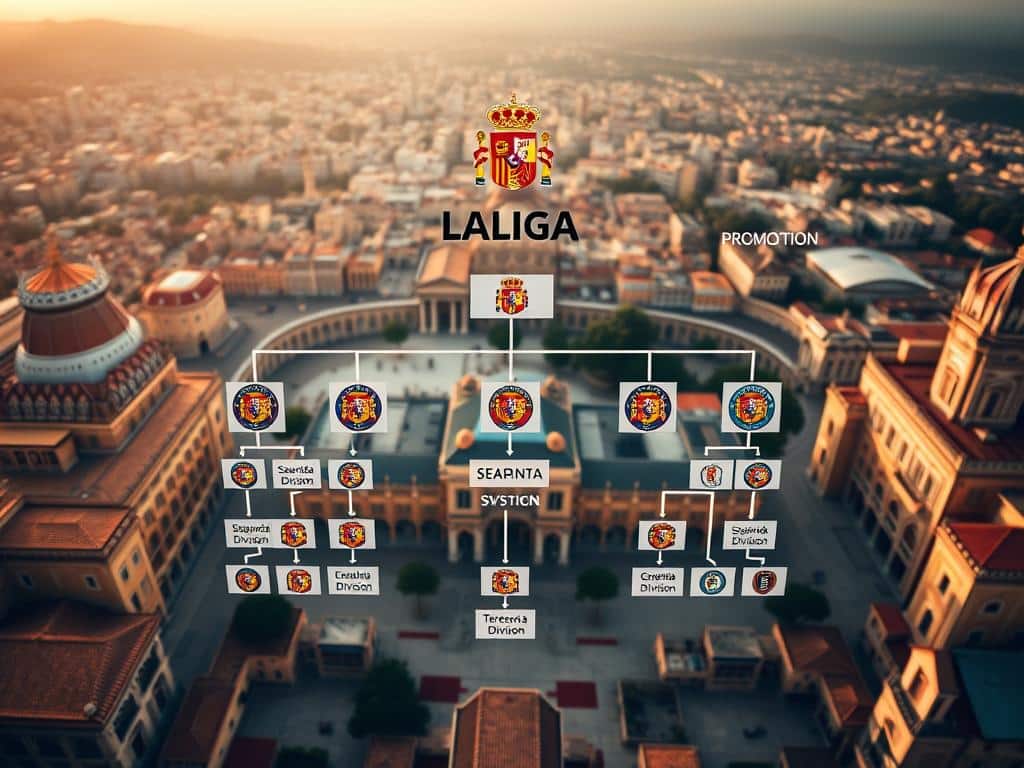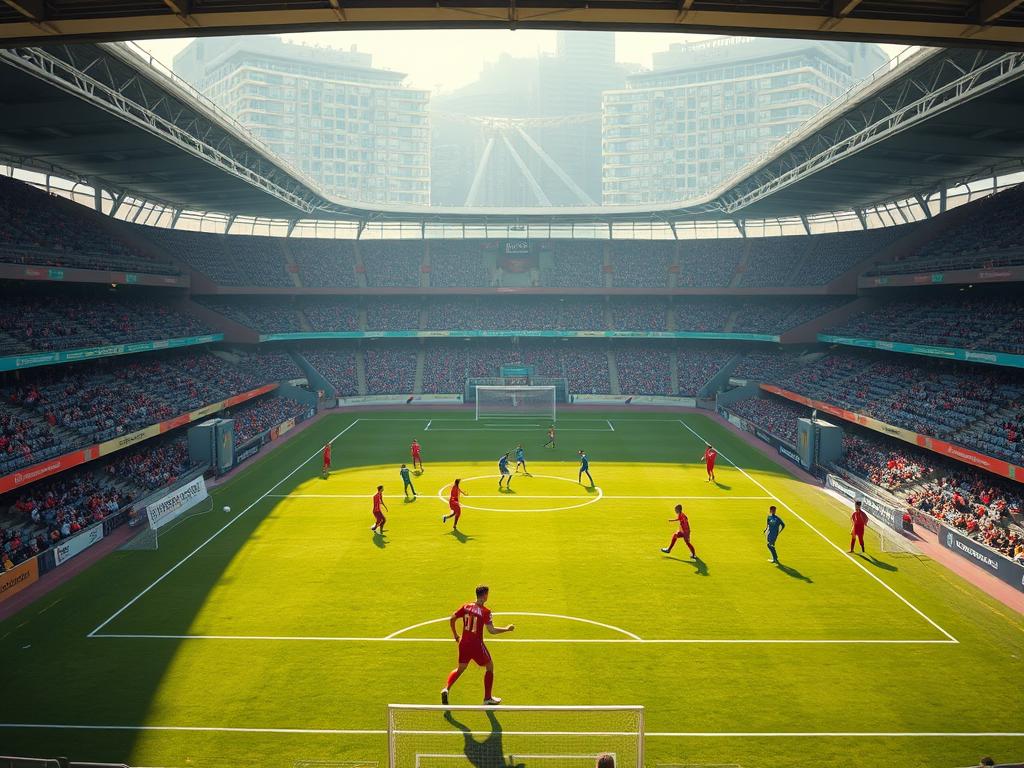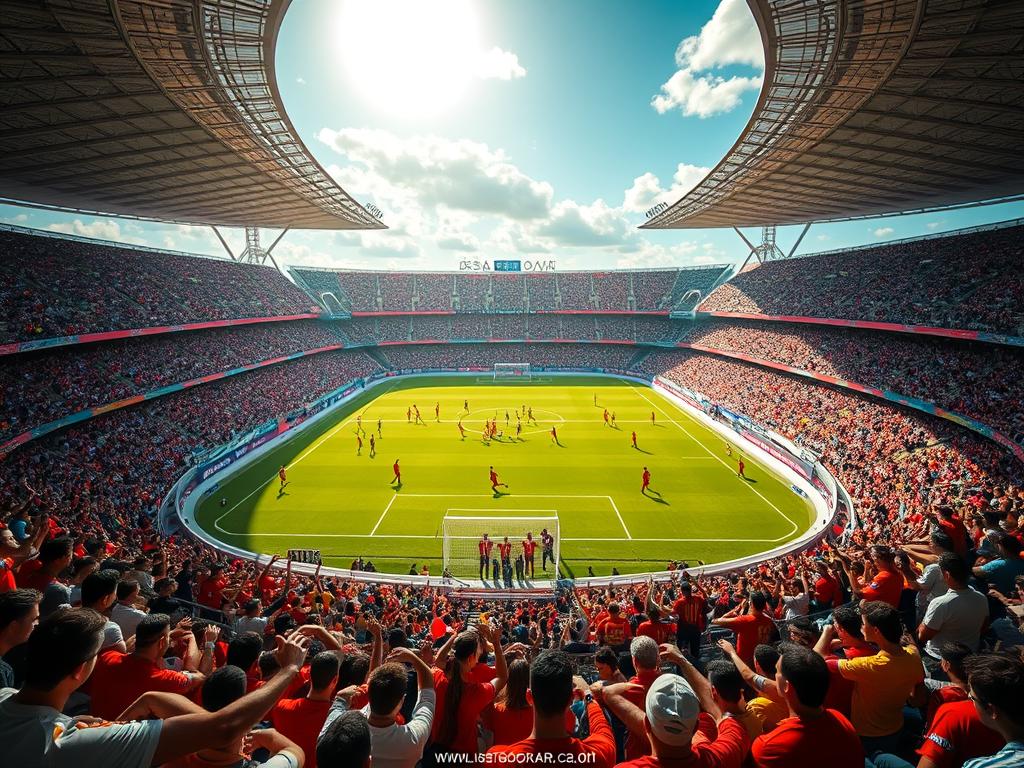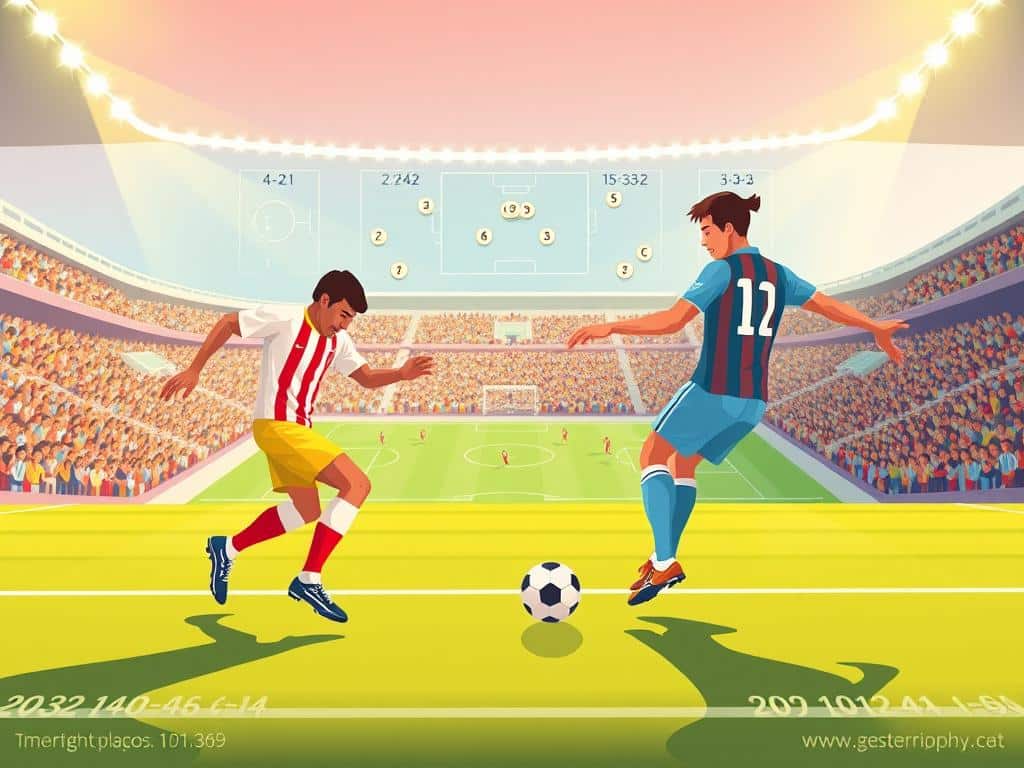If you think English football’s league system is straightforward, Spanish football will blow your mind. With over 440 teams spread across regional divisions, Spain’s league system is a maze of passion, drama, and high stakes.
Every season, the battle to stay in LaLiga—Europe’s most-watched league—intensifies. The bottom three teams face automatic drops, while the lower tiers feature a staggering 80 teams in just one division. And that’s not even counting reserve squads with unique rules.
By the end of this guide, you’ll navigate Spain’s football pyramid like a seasoned fan. Ready to dive in?
Understanding Promotion and Relegation in Spanish Football
Spain’s football pyramid is a thrilling, multi-layered adventure. Unlike simpler league systems, it blends fierce competition with unique rules that keep fans on their toes.

The Basics of Spain’s Football Pyramid
The spanish football league system has four key tiers:
- LaLiga (Primera División): The top flight, home to giants like Barcelona and Atlético Madrid.
- Segunda División: The second tier, where promotion battles rage.
- Segunda B: A sprawling third division with 80 teams split into groups.
- Tercera División: Hyper-regional, acting as the gateway to semi-pro football.
Reserve squads add a twist. They can climb to Segunda but never share a division with their senior teams. In 2023, Real Madrid Castilla topped Segunda B—yet couldn’t advance further because Real Madrid already dominated LaLiga.
Compare this to England’s EFL, which has 92 pro clubs. Spain’s third tier alone dwarfs that number! When Granada’s first team dropped in 2022, their B-team also fell from Segunda B—a ripple effect unique to the spanish football league system.
How Promotion and Relegation in LaLiga Works
The battle for survival and glory in Spanish football is fierce and full of twists. Whether a club is fighting to stay in the top flight or pushing for a higher division, the rules shape every season’s drama.
Primera División: The Drop Zone
Finish 18th to 20th? You’re headed straight to Segunda—no playoffs, no second chances. In 2022, Levante’s six-year run in LaLiga ended this way.
The bottom four teams often scramble until the final matchday. One point can mean the difference between safety and a painful drop.
Segunda División: Road to the Top
Twenty-two teams compete here. The top two teams earn automatic promotion. Places 3rd to 6th enter a playoff, like Getafe CF’s 2023 win over CD Tenerife.
Winning the playoff means joining the elite. Losing? Another year grinding in the second division.
Reserve Teams: Unique Challenges
B-squads face reserve team restrictions. They can’t share a division with their senior club. If the first team relegates, the reserve side drops too.
Real Madrid Castilla topped Segunda B in 2023 but couldn’t advance. Their parent club already dominated LaLiga.
The Lower Tiers: Segunda B and Tercera Division
Beyond LaLiga, Spain’s lower divisions deliver intense battles and regional pride. The segunda division’s third and fourth tiers—Segunda B and Tercera—are where dreams clash with gritty reality.

Segunda B (Third Tier): Multi-Group Playoffs
Picture March Madness with 80 teams. Segunda B splits into four groups of 20. The winners advance directly to a “Final Four,” while 2nd–4th-place squads fight through three playoff rounds.
In 2024, Cultural Leonesa survived a 12-match gauntlet to reach the segunda division. Their journey showcased the tier’s unpredictability—where one slip can end a season.
Tercera División (Fourth Tier): Regional Complexity
Here, football gets hyper-local. Eighteen regional groups compete, with winners and 27 playoff victors chasing 18 promotion spots. The tercera division is a gateway for semi-pro teams aiming higher.
Clubs like UE Cornellà rose from this tier, proving talent thrives even in Spain’s deepest leagues. Regional rivalries add fire, making every match a must-watch.
Historical Context and Key Changes
Spanish football’s history is packed with dynasties, rule changes, and unforgettable moments. Few sports leagues boast a legacy as competitive as LaLiga, where giants like Real Madrid and Barcelona have claimed 64 titles combined since 1929.
Only nine teams have ever won the top flight. The last outsider? Deportivo La Coruña in 2000—a rare break in the Real Madrid, Barça, and Atlético Madrid stranglehold.
Rule shifts have reshaped the leagues too. In 2008, reserve squads could only play in Segunda B if their senior team was in Primera. Before that, Atlético Madrid’s 1996 double-winning B-team forced stricter rules to prevent conflicts.
Did you know? The Segunda División once had over 20 teams. Today’s 22-club format debuted in 2022, streamlining promotion battles. Meanwhile, the 2019 Tercera reform expanded to 18 regional groups, helping local clubs climb the pyramid.
Over 90 years, LaLiga’s evolution has balanced tradition with innovation—where legends are made and underdogs defy the odds.
Mastering LaLiga’s Dynamic League System
Mastering Spain’s football league system takes passion and a keen eye for detail. Three teams drop from the top tier, while four fight their way up from Segunda B. Reserve squads add extra spice with their unique rules.
Loved this guide spanish football? Share it with your futbolero friends using the buttons below! Want to dive deeper? Join our Madrid or Barcelona soccer camps and train like the pros.
One question lingers: Will Girona’s 2024 Cinderella story crown them champions or send them tumbling? The drama never stops in this guide spanish football favorite!







